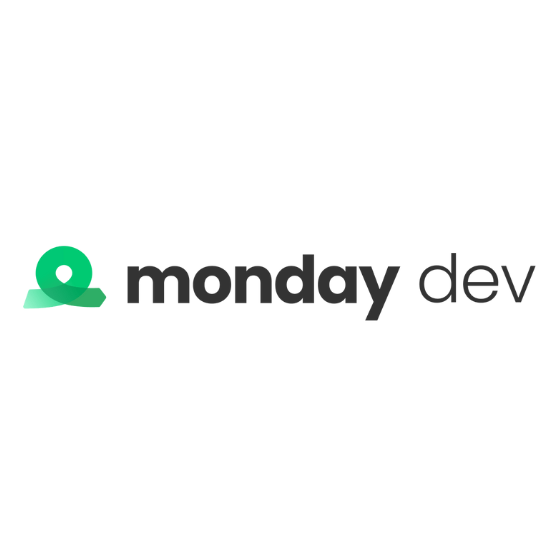Trend or Tradition?: DevOps is no longer a cutting-edge trend but an established way of doing business, ingrained in the practices of developers and IT professionals alike, marking its evolution from a radical idea to mainstream methodology.
The DevOps Philosophy: DevOps represents a merger of development and operations to expedite the delivery and enhance the quality of software. It’s built on a culture of collaboration and continuous evolution, aiming to break down traditional silos.
Tech Evolution Supports DevOps: The rise of containerization, cloud-native ecosystems, and Infrastructure as Code (IaC) empowered the DevOps movement, bringing more agility and efficiency into software development and deployment processes.
Security Gets a Seat at the Table: The emergence of DevSecOps integrates security into the early stages of software development, underscoring the shift towards prioritizing early vulnerability detection to minimize risks.
Culture and Tools Go Hand in Hand: While DevOps significantly benefits from technological advancements like AI and ML, its essence revolves around fostering a positive culture that prioritizes people, collaboration, and continuous improvement.
When does a tech trend stop being a trend and simply become business as usual?
We could spend debating that particular tipping point – there’s no “correct” answer to the question. Suffice it to say that when a “trend” is well into its second decade – as is the case with DevOps culture and practices – then it’s simply the way things get done. (By most accounts, DevOps began to take its current shape around 2007-ish.)
In our Ultimate Guide to DevOps, here's how we defined the term: “DevOps is a set of practices and philosophies that combines software development (Dev) and IT operations (Ops), aiming to shorten the systems development life cycle and provide continuous delivery with high software quality. It's an approach that emphasizes collaboration, communication, and integration between developers and IT professionals.”
In its earlier phases, that sounded strange and scary – radical, even – to some IT pros. Now, it’s so mainstream as to be commonplace. In CD Foundation’s State of CI/CD Report, 83% of developers said they’re involved in DevOps-related activities. That’s not actually everyone, but it sure is getting close.
That said, DevOps – which is as much of a culture as it is any particular set of tools or processes – is, by its nature, continuously evolving.
In this article, we’ll look at how we got to this point – and how DevOps continues to evolve today. First, it’s important to understand why DevOps exists.
Why is DevOps Important?
DevOps combines the terms "development" and "operations” – two long-standing technology domains. The primary goal of DevOps is to foster a high degree of integration between these two important components of an IT system, focusing primarily on the continuous delivery and quality testing of software. Traditionally, those functions were separate and siloed – which caused bottlenecks, delivery delays, quality issues, finger-pointing (when things go wrong), security weaknesses, and other issues.
DevOps – both as a term, but, more importantly, as a culture and practice – reflects the need for software organizations to build and ship code faster and more frequently without sacrificing quality, reliability, or security.
-

monday dev
Visit WebsiteThis is an aggregated rating for this tool including ratings from Crozdesk users and ratings from other sites.4.6 -

QA Wolf
Visit WebsiteThis is an aggregated rating for this tool including ratings from Crozdesk users and ratings from other sites.4.8 -

Site24x7
Visit WebsiteThis is an aggregated rating for this tool including ratings from Crozdesk users and ratings from other sites.4.6
How We Got Here: DevOps Trends From The Past
The massive growth of DevOps over the past decade or so intersected with multiple related technology trends that enabled DevOps practices and grew out of DevOps principles and culture. Some of the most notable factors that led to this point include:
Containerization: We’ve seen increased adoption of Docker and other tools for software containerization, which has helped make applications portable across different platforms, such as various public and private cloud platforms (including Amazon Web Services, Microsoft Azure, and Google Cloud Platform) as well as on-premises infrastructure.
Cloud-native ecosystem: We saw a sharp rise in cloud-native application development, which ensures the scalability of infrastructure and services. To capture the entire cloud-native landscape in a single place, you need a billboard-sized whiteboard— even in a web browser, you’ll likely need to scroll to see everything!
Cybersecurity: While DevOps might have initially focused on a tighter alignment of development and operations work, it also highlighted the need for prioritizing security early in the software development lifecycle (SDLC). DevSecOps emerged as a prominent trend, integrating security into the DevOps pipeline instead of treating it as a separate entity. This enhanced early detection of vulnerabilities, among other benefits, minimizing the risks and impacts in production.
Infrastructure as Code (IaC): DevOps made automation a first-class citizen in IT environments, and that trend was especially prominent on the infrastructure front; infrastructure management had typically been a very manual, repetitive job, but the introduction of Infrastructure as Code (IaC) providing efficient, reliable, and repeatable mechanisms for managing the infrastructure that software applications run on.
Culture: DevOps has never been solely about technology. Rather, it aimed to prioritize people and relieve them of unnecessary burdens or headaches in their work. As a result, DevOps helped bring a renewed focus on the importance of healthy and non-toxic workplace culture, with an emphasis on things like psychological safety, blameless postmortems, shared incentives, continuous improvement, and more.
Artificial intelligence and Machine Learning: While large language models (LLMs) and generative are all the rage at the moment, AI/ML is certainly not new. Machine learning in particular has already been used for things like predictive analytics, error detection, and process automation in various DevOps contexts.
Current DevOps Trends
While most of the above patterns have been in place for quite some time, that’s not to say DevOps has stagnated. It appears as popular as ever – and in-demand as ever from a hiring perspective. A recent U.S.-wide search for DevOps engineer positions on LinkedIn – a single job title among a sea of potentially relevant roles – produced nearly 5,000 open jobs.
As it has matured, DevOps has continued to evolve. Let’s dig into five of the most visible ways DevOps continues to change.
1. Widespread adoption of Kubernetes
As container adoption soared, it became readily apparent that DevOps teams needed a better way to manage everything. Enter Kubernetes, which became the standard bearer in container orchestration, and a common platform (available in many distributions or flavors) for teams to manage their applications and infrastructure.
“Kubernetes and containers made it possible for teams to package all the necessary environments and run their code on a standard platform so operations teams can worry only about the health of the Kubernetes platform,” Vitor Avancini, CTO of AI and data consultancy Indicium, tells us.
Kubernetes offers robust automation, networking, and storage infrastructure for cloud-native workloads. It is also what made one of the initial promises of containerization – the ability to move workloads across environments without essentially rebuilding them – more realistic: “It made it easier for the operations team to copy and paste many environments, since you don't need different environments for different application stacks.”
That helps explain why roughly two-thirds of organizations are running Kubernetes in production, according to the Cloud Native Computing Foundation’s 2023 survey, with another 18 percent actively evaluating it for production use.
DevOps Tools to Help: Kubernetes (the raw open source distribution), plus a wide range of commercial and managed container management software.
2. Automation is everywhere in DevOps
Kubernetes is the prime example of a wider trend that took root in the earlier days of DevOps: Automating all the things.
What started as a meme is moving closer to reality in the sense that automation seems to be everywhere in DevOps, CI/CD, and GitOps pipelines—from security scans to QA reviews to build and deploy tasks to policy enforcement and more. That’s also evident in a dizzying array of automation tools. Some of them—namely, low-code and no-code tools—don’t even require programming expertise.
“Things can get messy with all the freedom [DevOps] brings to teams, so tools for [automation]may play an important role in keeping things organized and governed,” Avancini says, noting that IaC tools such as Terraform continue to play a significant role here.
DevOps Tools to Help: Terraform, Ansible
Prioritization is a very common challenge, with companies often postponing critical cloud tasks such as database optimization and infrastructure development to the later quarters or even over to the following year. DevOps teams are eager to address these issues, but once they sit down, the sheer volume of tasks often makes it difficult to decipher which issues are the most high-value and should take priority.
This is actually why Zesty expanded to a platform that includes actionable insights, helping companies prioritize and efficiently implement the most valuable fixes first. To effectively prioritize these tasks, companies need clear insights into the time and financial investments involved. Platforms that automate these processes are invaluable, as they enable better decision-making and resource allocation. DevOps has become increasingly aware of the value that platforms provide with automation, visibility, and actionable recommendations.
3. Microservices architecture is everywhere, too
Microservices architecture – which essentially entails breaking larger applications up into smaller, discrete components that run independently while still working together to comprise the larger system – isn’t new. However, for many years, the approach wasn’t always realistic for many organizations.
Today, three-quarters (74%) of companies are using microservices, according to Gartner, and almost everyone else (23%) is planning to do so in the near future.
“Microservices brought the opportunity for teams to choose their own tooling stacks, which previously required central operations teams to provide different testing and deployment environments to development teams,” Avancini says.
You can spark a chicken-or-egg argument here because microservices architecture is a natural fit for containers and Kubernetes – so the maturity of the former likely spurred uptake of the latter, as has the general maturation of cloud-native technologies and development. (Net-new or “greenfield” applications built today are more likely to be developed for cloud-native environments, with microservices as a prominent architectural option.)
Microservice architecture has also walked hand-in-hand with serverless computing (or serverless architecture). They’re separate but often related things – a simple way to distinguish them is that microservices is an architectural approach to software design, while serverless is an architectural approach to how that software actually runs.
DevOps Tools to Help: Prometheus, Compass, AWS Fargate
4. Platform Engineering is The New DevOps (sort of)
OK, the headline is a bit of an exaggeration – platform engineering and DevOps are different disciplines, but their relationship continues to grow. An anecdotal bit of evidence: Puppet’s long-running State of DevOps report included in its 2024 subtitle: “The Evolution of Platform Engineering.”
Platform engineering is the discipline of building internal platforms – with a heavy emphasis on self-service – to give developers and other technologists everything they need to build applications and services. As with DevOps, there’s a heavy emphasis on infrastructure automation, standardized toolchains and workflows, and so forth. Provisioning a dev or test environment, for example, shouldn’t require sending a request ticket to a wholly separate infrastructure management team.
“[A] big trend is platform engineering, which will provide the tooling and practices so dev teams can not only develop but also test, monitor and rollback applications” in a unified, consistent manner, Avancini says, and without regularly asking operations pros for the infrastructure and services they need to do so.
Avancini notes there’s also a general shift in DevOps toward centralized processes – which at first might seem counterintuitive given the organic development of many DevOps cultures. But platform engineering can be viewed through this lens: DevOps doesn’t mean anarchy. Devs and other IT pros still need tooling, infrastructure, and – yes – guardrails.
You’ll also sometimes see the terms Internal Developer Platform (IDP) and Integrated Developer Environment (IDE) in this context.
DevOps Tools to Help: Kubernetes, Humanitec
5. AI Will Have a Growing Role in DevOps
Emerging AI applications – most recently represented by the new class of LLM-based generative AI applications that have captivated attention lately – will likely find their way into DevOps processes and toolchains as well. There’s even a term for this marriage: AIOps.
Perhaps the simplest way to think about where AI will be useful is from the broader perspective of automation: If something can be automated, or if human intelligence and effort can be leveraged somehow, AI could (and probably will) play a role.
“AI assistance will play an important role in DevOps mainly in code review assistance, code quality and security analysis, and describing automatically all the effects new code might have when deployed,” Avancini says.
Indeed, there’s a laundry list of potential use cases, many of which are still surfacing now. Expect developer productivity and security automation to be two of the bigger areas of focus in the near future.
DevOps Tools to Help: GitHub Copilot
The Bottom Line
DevOps culture and practices have stood the test of time – but that doesn’t mean they’re static. What are the latest DevOps trends in your organization? Where do you see DevOps going in the coming years? Join The CTO Club’s newsletter for more industry news and discussions!







